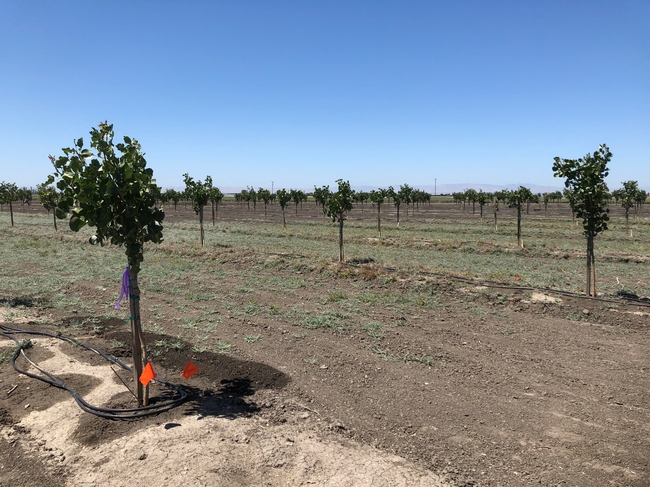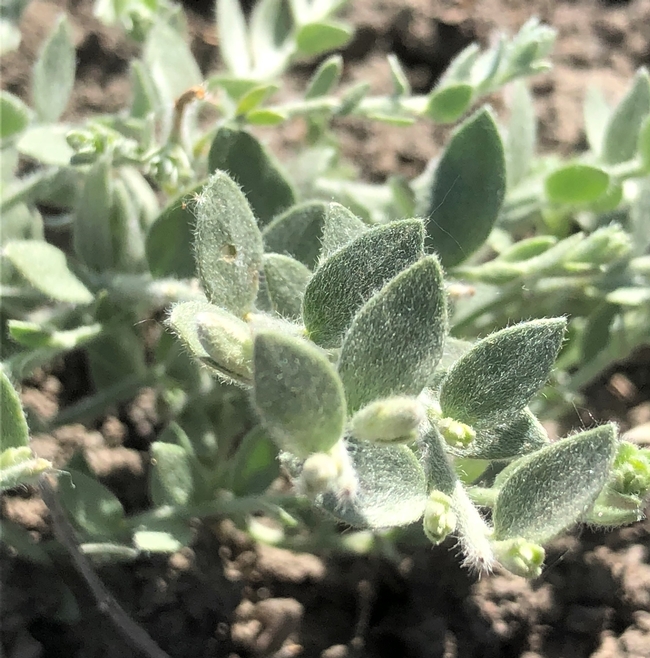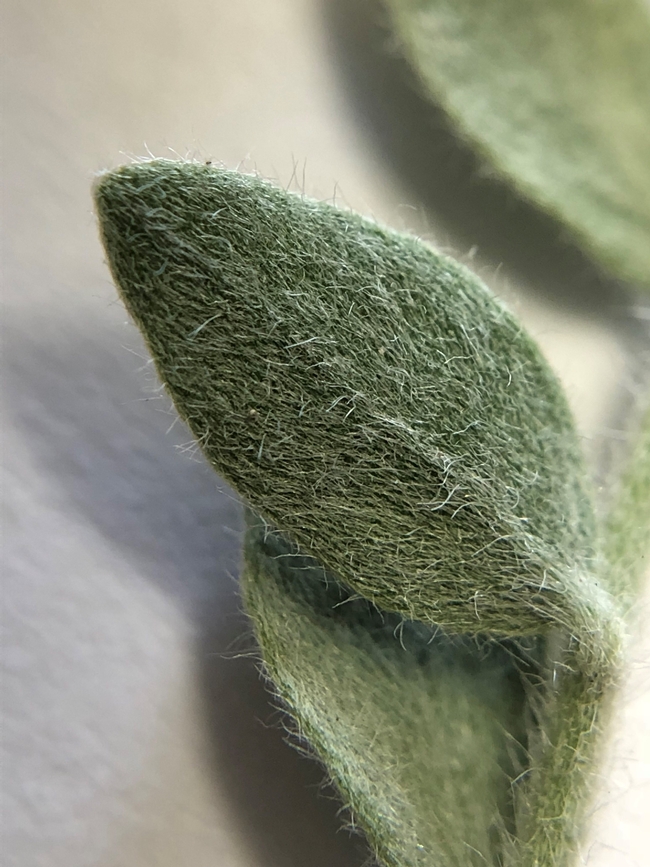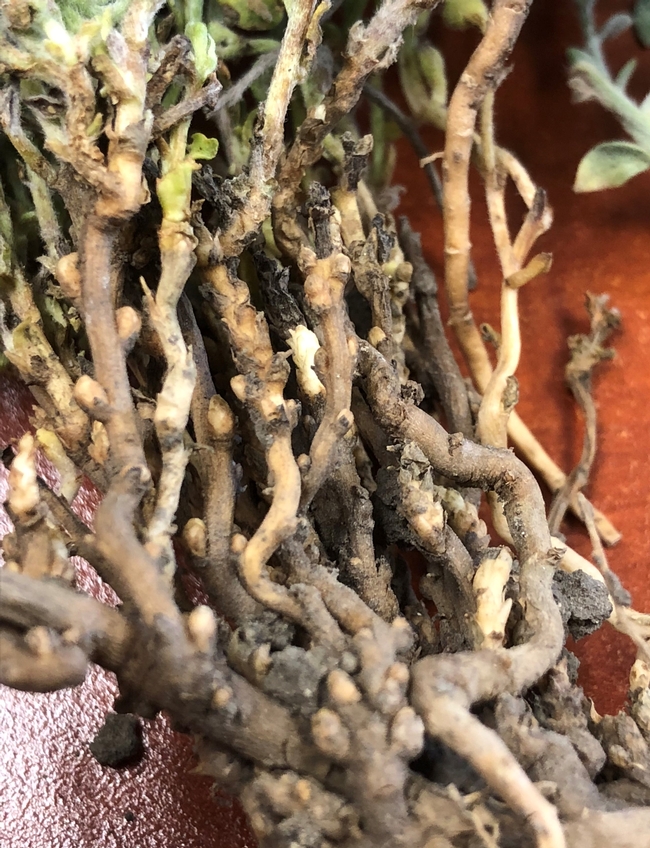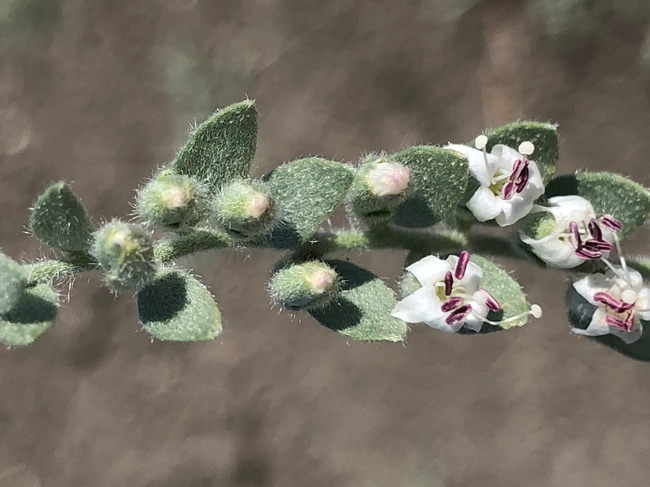NOTE: A graduate student at CSU Fresno is looking to describe the geographic distribution of alkaliweed in California. Please see the end of the article for a link to a QUICK survey describing where YOU have encountered this species.
Growers (mainly pistachios) and crop consultants in the southern and western parts of the San Joaquin Valley have recently reported the spread of alkaliweed from low-lying saline or alkaline soils (including seasonal wetlands and floodplains) into irrigation ditches, orchards, and some agricultural fields.
Figure 1. Alkaliweed in pistachios.
Now, some of you may be asking 'What is alkaliweed?'
Alkaliweed (Cressa truxillensis) is a native, perennial plant in the morningglory family (Convolvulaceae), the same family of field bindweed (Convolvulus arvensis) and dodder (Cuscuta spp.). The species has a prostrate to ascending growth habit, rarely exceeding a foot in height. The species produces grey-green, elliptic leaves that alternate on stems. The leaves are covered with NUMEROUS soft and silky hairs.
Figure 2. Alkaliweed is a perennial, tufted to vase-shaped plant that is prostrate to ascending in habit.
Figure 3. Alkaliweed produces grey-green leaves that are covered with NUMEROUS soft and silky hairs.
As was noted earlier, the species is a perennial and it produces a woody crown and taproot. Alkaliweed flowers between May and October. Flowers are small (less than 0.5 inches in length), with a white, 5-lobed corolla that is reflexed. Flowers are held singly in leaf axils.
Figure 4. The crown of alkaliweed is woody.
Figure 5. Alkaliweed flowers held singly in leaf axils.
Unfortunately, little information is available describing more the biological and ecological characteristics of this plant species. Therefore, we are asking for your assistance to help us identify where you encounter this species and if it has become a problem in your production systems.
Please follow this link https://survey123.arcgis.com/share/1f4753edfd7347ce84cc81f35e65dc02 to take a quick survey about the distribution of alkaliweed in your area. If you have any further questions about this species or this survey, please contact James Schaeffer at jmschaeffer@ucanr.edu.
Thanks so much for your time and effort.
